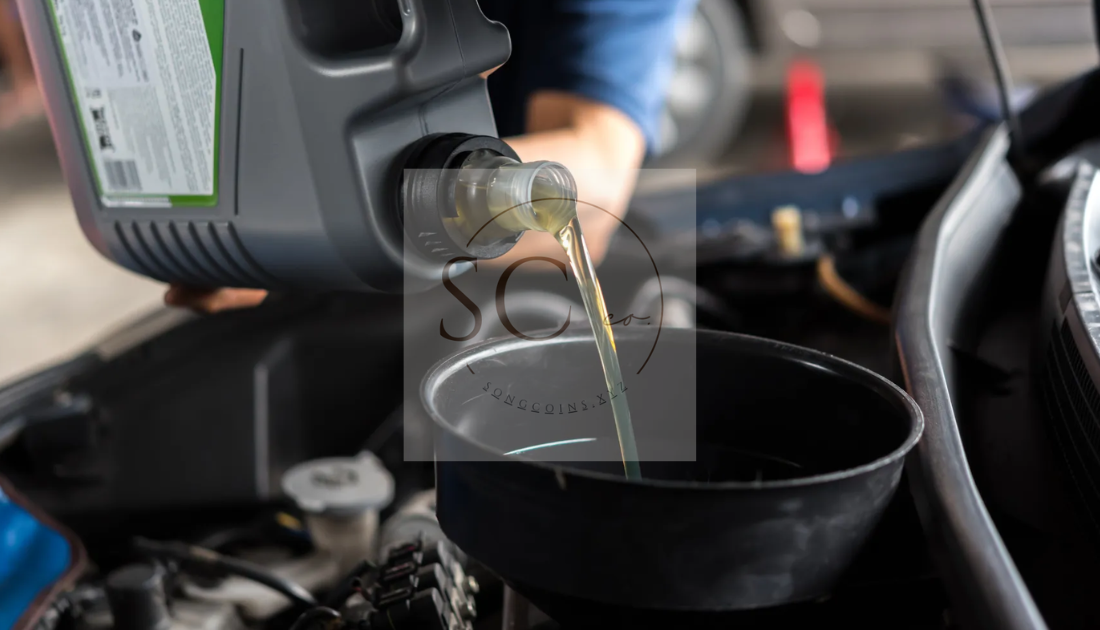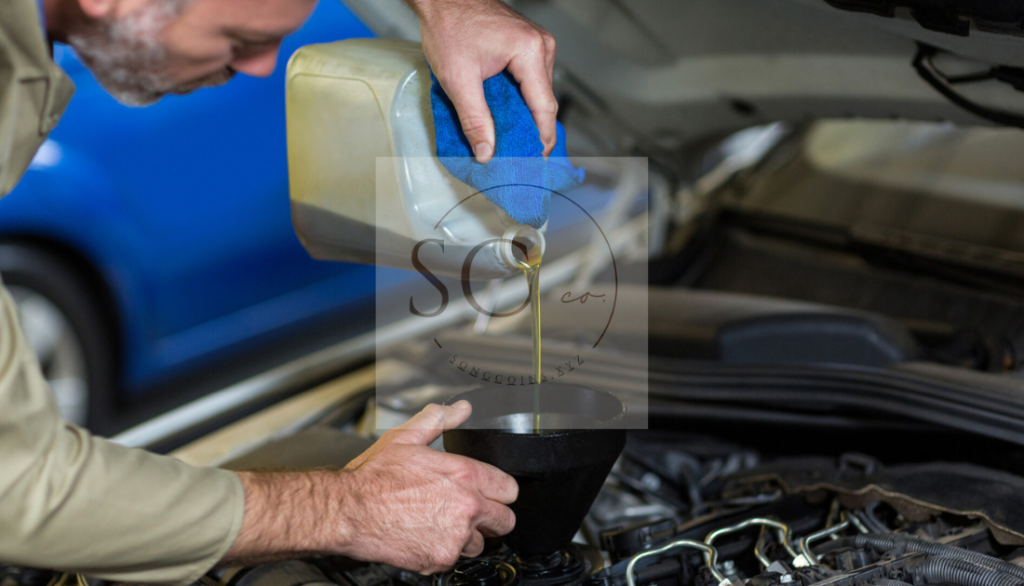Blog
Racing Oil Temperature Protection: Ensuring High Performance Engine Reliability
For race car enthusiasts and high-performance vehicle owners, protecting the engine under extreme conditions is essential. Racing oils are specifically formulated to handle high-stress environments, where elevated temperatures and high speeds can put a strain on engine components. One critical factor in engine protection is controlling oil temperature. In this article, we’ll explore why racing oil temperature protection matters, how racing oil works, and key tips for maintaining optimal oil temperature for your high-performance engine.
1. Why Temperature Protection is Vital in Racing Engines Racing engines operate at high RPMs and endure significant stress, which generates intense heat. Without proper temperature protection, oil can quickly reach unsafe levels, risking engine damage. High temperatures can cause oil to break down, lose viscosity, and reduce its ability to lubricate effectively. This degradation leads to increased friction, wear, and potential overheating.
Racing oil temperature protection ensures that the oil maintains its viscosity, preventing these risks. The right racing oil helps cool the engine, control friction, and withstand the thermal demands of high-performance driving. Maintaining the right oil temperature is key to maximizing engine life and performance.
2. How Racing Oil Temperature Protection Works Racing oil is designed with specific properties that allow it to protect the engine under extreme conditions. High-quality racing oils contain additives that enhance thermal stability and reduce oxidation at elevated temperatures. These additives prevent the oil from thinning, even when temperatures soar, and allow it to continue providing essential lubrication to engine components.
Additionally, racing oils often include friction modifiers that reduce heat caused by metal-to-metal contact. By minimizing friction, the oil helps the engine run cooler and more efficiently. Some racing oils also contain dispersants that prevent deposits and sludge from forming, further promoting engine cleanliness and heat dissipation.
3. Key Features of Racing Oils for Temperature Protection Not all oils are suitable for racing, and choosing the right racing oil requires understanding the features that enhance temperature protection. Look for oils with the following characteristics:
- High Viscosity Index: A high viscosity index means the oil maintains its thickness over a broad range of temperatures. This feature ensures that the oil remains effective in both hot and cold conditions, providing stable lubrication.
- Synthetic Base Stocks: Synthetic oils are often preferred for racing due to their superior heat resistance and stability. They handle high temperatures better than conventional oils and maintain performance in extreme conditions.
- Anti-Oxidation Additives: These additives prevent the oil from breaking down under high temperatures. By protecting against oxidation, they extend the oil’s lifespan and keep it effective at high RPMs.
- Friction Modifiers: These reduce metal-on-metal contact, decreasing friction and heat generation within the engine. This reduction in friction contributes to overall temperature control, preventing overheating during prolonged high-speed driving.
These features make racing oils uniquely suited for performance vehicles, providing both protection and efficiency in high-stress environments.

4. Monitoring Oil Temperature for Maximum Protection Temperature protection isn’t only about choosing the right oil—it’s also about monitoring and managing oil temperature. Installing an oil temperature gauge allows drivers to keep track of oil temperature in real time. This gauge provides essential information during racing, helping drivers know when to ease off the throttle to prevent overheating.
Ideally, oil temperature should stay within the range specified by the vehicle’s manufacturer or the oil brand. For most racing oils, this range is typically between 180°F and 220°F, but specific requirements may vary. When temperatures rise beyond the safe range, the risk of oil breakdown increases, compromising protection. Regular monitoring and timely adjustments keep the engine safe and maximize racing oil temperature protection.
5. Common Causes of Overheating in Racing Engines Understanding what causes high oil temperatures can help prevent overheating. Some common factors include:
- High RPMs: Racing involves sustained high RPMs, which generate significant heat. The faster the engine runs, the more friction and heat it produces.
- Ambient Temperature: Racing in hot weather can increase oil temperatures, making temperature protection even more critical.
- Poor Airflow: Without adequate airflow to the engine, heat can build up more easily. Ensuring proper ventilation and airflow within the engine bay is essential for temperature management.
- Extended Driving Sessions: Long races or track sessions without breaks put additional stress on the engine. Heat builds up over time, increasing oil temperature and the risk of breakdown.
Addressing these factors through engine tuning, cooling system upgrades, and racing oil with temperature protection properties can help maintain safe oil temperatures.
6. Cooling Systems that Support Racing Oil Temperature Protection While racing oil provides a first line of defense against high temperatures, a robust cooling system is also essential. Some effective cooling components include:
- Oil Coolers: An oil cooler works like a mini radiator for your oil, circulating it through a cooling element to lower temperature before returning it to the engine. This cooling effect helps keep oil within a safe range, even during high-speed racing.
- High-Performance Radiators: Upgrading to a high-performance radiator improves overall engine cooling, which indirectly helps control oil temperature. A quality radiator can handle the extra heat generated by racing conditions.
- Thermostatic Oil Sandwich Adapters: These adapters allow oil to bypass the cooler until it reaches a certain temperature, ensuring that the oil doesn’t get too cold. Thermostatic control helps maintain an optimal temperature range, providing consistent protection.
By combining these cooling components with racing oil, drivers can maintain stable oil temperatures, improving engine safety and performance.
7. Choosing the Right Racing Oil for Your Vehicle Selecting the right racing oil for temperature protection involves several considerations. First, consult your vehicle’s manual or a professional for oil recommendations based on the engine type and typical driving conditions. Synthetic oils are generally preferred for racing due to their superior temperature resistance, but specific oil viscosities may vary based on the engine’s design and performance needs.
Some top racing oil brands to consider include Mobil 1 Racing Oil, Red Line Synthetic Oil, and Motul 300V Racing Oil. Each offers high-temperature stability, anti-wear additives, and anti-oxidation properties, making them ideal for performance vehicles. Reading reviews and comparing specifications can help you find the best oil for your specific requirements.
8. Maintenance Tips for Racing Oil Temperature Protection Regular oil changes and engine maintenance are essential for maintaining oil performance. Even the best racing oil will degrade over time, especially under high-stress conditions. Regularly changing the oil and filter ensures consistent temperature protection and maximizes engine longevity.
Additionally, inspect your cooling system components and gauges to ensure they function correctly. Clean or replace clogged oil coolers, and check thermostat settings regularly. By keeping your cooling and oil systems in top condition, you ensure the highest level of protection and efficiency.
Conclusion Racing oil temperature protection is critical for maintaining engine performance, reliability, and safety in high-stress conditions. By choosing the right oil, monitoring temperature, and supporting the oil system with adequate cooling, you can keep your engine running at its best. Investing in quality racing oil with temperature-protection properties provides peace of mind, knowing your engine is safe during intense driving sessions.
Whether you’re a seasoned racer or a performance enthusiast, managing oil temperature is key to protecting your investment and enjoying a smooth, powerful driving experience. By following these guidelines, you’ll extend your engine’s life, reduce wear, and make the most of every race or high-performance drive.

